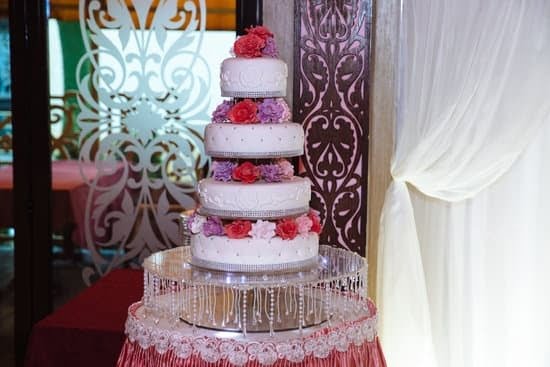Planning a wedding can be an overwhelming task, but with the right approach, it can also be an incredibly rewarding experience. From setting a budget to managing RSVPs and creating a day-of timeline, there are many important steps to consider when preparing for your special day. In this article, we will explore the essential aspects of planning a wedding step by step, providing valuable tips and guidance along the way.
When it comes to planning a wedding, attention to detail is key. Every decision – from selecting the perfect venue to choosing the right vendors – plays a crucial role in creating the wedding of your dreams. By following a comprehensive plan and staying organized throughout the process, you can ensure that your big day goes off without a hitch.
Throughout this article, we will delve into each stage of wedding planning and provide expert advice on how to navigate through every step seamlessly. Whether you’re just starting out or looking for last-minute tips and tricks, our guide will help you create a memorable and stress-free wedding experience. So let’s begin by understanding the importance of planning a wedding and how it sets the foundation for a successful event.
Setting a Budget
When determining your wedding budget, consider all potential sources of funding, including contributions from family members or personal savings. It’s also important to prioritize what elements of the wedding are most important to you. For example, if having an elaborate floral display is a top priority, allocate more of your budget towards florals and adjust accordingly for other areas.
To help with setting a budget, create a spreadsheet that outlines all potential expenses and estimated costs. This will allow you to keep track of your spending as you start booking vendors and making purchases for your wedding. Be sure to also include a contingency fund in case of any unexpected expenses that may arise during the planning process.
A well-planned budget not only helps keep track of costs but also ensures that you can enjoy the wedding planning process without unnecessary stress about finances. It allows you to make informed decisions about where to allocate resources while being mindful of staying within your means.
| Wedding Expenses | Estimated Cost |
|---|---|
| Venue Rental | $5,000 |
| Catering | $8,000 |
| Photography/Videography | $3,500 |
| Floral/Decorations | $2,500 |
Choosing a Date and Location
Choosing the right date and location for your wedding is one of the most important decisions you’ll make in the planning process. There are several factors to consider when selecting the perfect venue, such as the season, availability, and the overall vibe you want to create for your big day.
First, consider what time of year you want to get married. Each season has its own unique charm and can greatly impact the overall look and feel of your wedding. For example, a spring wedding may feature blooming flowers and pastel colors, while a winter wedding could include cozy decor and a festive atmosphere. Additionally, certain times of year may be more popular for weddings, which could affect venue availability and pricing.
Next, think about the type of venue that best fits your vision. Are you dreaming of a rustic barn wedding, an elegant ballroom affair, or a romantic beach ceremony? It’s important to choose a location that aligns with your personal style as a couple. Keep in mind that some venues book up well in advance, so it’s crucial to start researching and visiting potential locations early in the planning process.
It’s also essential to consider the logistics of your chosen venue, such as accessibility for guests and any specific permits or regulations that may apply. Furthermore, think about how many guests you plan to invite and whether your chosen venue can comfortably accommodate them. Making these decisions thoughtfully will set the stage for a memorable and magical wedding day.
| Wedding Venue Factors | Considerations |
|---|---|
| Season | Choosing a date based on seasonal themes |
| Availability | Booking early due to peak seasons |
| Venue Type | Matching personal style as a couple |
| Logistics | Gathering information regarding guest capacity and accessibility |
Creating a Guest List
Consider Your Budget and Venue Capacity
When creating your wedding guest list, it’s important to consider both your budget and the capacity of your chosen venue. Take into account how many people you can afford to accommodate within your budget, as well as the maximum capacity of your venue. Keep in mind that every additional guest will increase the overall cost of your wedding, from catering expenses to seating arrangements.
Be Selective and Strategic
It can be challenging to narrow down your invitees, especially if you have a large social circle or a tight-knit family. When making these decisions, it’s important to be selective and strategic. Consider inviting only those who have played significant roles in your life, such as close family members and friends. Additionally, take into account relationships that may be strained or distant, and assess whether inviting certain individuals is truly necessary for your special day.
Communicate With Your Partner
As you work on the guest list, open up communication with your partner to ensure that you are on the same page about who to invite. It’s crucial to discuss any potential conflicts or concerns when deciding on mutual friends or extended family members. By establishing open dialogue and compromise, you can create a guest list that represents both of you while maintaining harmony in the planning process.
Selecting Vendors
When it comes to planning a wedding, one of the most important decisions you will make is selecting the vendors who will help bring your vision to life. From catering services to photographers, each vendor plays a crucial role in creating the perfect atmosphere for your big day. Here’s a step-by-step guide on how to find the best team for your wedding.
The first step in selecting vendors for your wedding is to do thorough research. Start by asking for recommendations from friends and family who have recently been married or attended weddings.
You can also check online reviews and ratings on websites like WeddingWire and The Knot to get an idea of vendors’ reputations. Once you have a list of potential vendors, schedule meetings or consultations with each one to discuss your needs and see if they are the right fit for your wedding.
After conducting research and meeting with potential vendors, it’s time to consider your budget. Determine how much you are willing to spend on each vendor category, whether it’s catering, photography, floral arrangements, or entertainment. Keep in mind that while quality is important, there are often ways to negotiate prices without compromising on the overall experience.
Once you’ve chosen your vendors, make sure to clearly communicate your expectations and requirements. Review contracts carefully, and don’t be afraid to ask questions or request modifications if necessary. Good communication with your vendors will ensure that everyone is on the same page and working towards creating the wedding of your dreams.
Designing Your Theme
When it comes to planning a wedding, choosing a theme and decor is an essential part of the process. The theme sets the tone for the entire event and helps tie everything together, from the invitations to the venue decorations. Here is a step-by-step guide on how to choose a wedding theme and decor:
1. Reflect on Your Personal Style: Consider your personal style as a couple and think about what type of atmosphere you want to create for your special day. Whether it’s classic, rustic, modern, or bohemian, your theme should reflect your unique personalities.
2. Gather Inspiration: Look for inspiration from various sources such as wedding magazines, Pinterest, and Instagram. Create a mood board with images that resonate with you and start visualizing how you want your wedding to look and feel.
3. Consult with Your Partner: It’s important to involve your partner in the decision-making process when choosing a theme. Discuss ideas together and come to an agreement on the overall vision for your wedding day.
4. Consider the Season and Venue: Take into account the season in which you’ll be getting married and the location of your chosen venue. The theme should complement these factors – for example, an outdoor garden wedding may lend itself well to a whimsical floral theme.
5. Hire Professionals: Once you’ve decided on a theme, consider hiring professionals who specialize in wedding decor such as florists, decorators, or event planners. They can help bring your vision to life while staying within budget constraints.
By following these steps, you can ensure that your wedding theme perfectly encapsulates your unique love story while creating a cohesive aesthetic throughout every aspect of your special day.
Managing RSVPs
Sending Out Invitations
Once you have selected the perfect date and venue for your wedding, it’s time to start sending out invitations. When sending out your invitations, it is important to include clear instructions for how guests can RSVP. Whether you choose to include a physical RSVP card or direct guests to an online RSVP platform, make sure the process is straightforward and user-friendly.
Tracking Responses
As the RSVP deadline approaches, it’s essential to keep track of the responses you receive. Create a system for organizing and recording each guest’s response, whether it’s through a spreadsheet, wedding planning app, or traditional pen and paper. This will help you accurately track the number of guests attending and finalize details with vendors and your venue.
Following Up With Non-Responders
Inevitably, there will be some guests who do not respond by the RSVP deadline. In these cases, it’s important to follow up with them personally to confirm their attendance or absence. Reach out via phone or email to inquire about their plans so that you can provide a final headcount to your vendors and finalize your seating chart.
Planning a wedding step by step includes meticulous organization when it comes to managing RSVPs – ensuring you have an accurate headcount will help everything run smoothly on your special day.
Day-of Timeline
On your wedding day, having a well-planned timeline can ensure that everything runs smoothly and according to your vision. This section will provide you with a step-by-step guide on how to create a schedule for your wedding day.
First, start by working backwards from the time of your ceremony and reception. Consider the duration of each part of the event, such as the ceremony, cocktail hour, dinner, and dancing. Once you have an idea of the overall timing of the day, create a detailed timeline that includes when each activity will take place.
Next, consider any special moments or traditions that you want to incorporate into your day, such as a first look or a special dance. These should be added into your timeline at specific times to ensure they are captured and enjoyed by all.
It’s also important to communicate this timeline with your vendors, such as the photographer, videographer, caterer, and DJ or band. Providing them with a clear schedule will help everyone stay on the same page and ensure that each vendor knows when their services are needed throughout the day.
Finally, be sure to build in some buffer time into your schedule to account for any unexpected delays or last-minute adjustments. Having some flexibility in your timeline will help alleviate any stress and allow you to fully enjoy every moment of your special day. With these steps in mind, you can create a comprehensive and organized day-of timeline for your wedding.
Conclusion
In conclusion, planning a wedding can seem like a daunting task, but by breaking it down into manageable steps, it can be a fun and exciting process. By setting a budget early on and making thoughtful decisions about the guest list, venue, vendors, and theme, you can ensure that your big day reflects your vision while staying within your means.
Managing RSVPs and creating a day-of timeline will help keep things organized and ensure that everything runs smoothly on the day of the wedding.
As you embark on this journey, remember to lean on your support system for guidance and assistance. Don’t be afraid to delegate tasks to family members or trusted friends who are willing to help. Communication is key when working with vendors and coordinating with guests, so stay in touch with everyone involved in the planning process to avoid any last-minute hiccups.
Lastly, enjoy the process. Planning a wedding should be an enjoyable experience filled with memorable moments. Take time to savor this special time in your life and embrace the excitement leading up to your big day. Congratulations on your engagement and best wishes as you embark on this beautiful journey of love and commitment.
Frequently Asked Questions
How Do You Plan a Wedding for Beginners?
Planning a wedding for beginners can seem overwhelming, but breaking it down into smaller tasks can help. Start by setting a budget, creating a guest list, choosing a venue, and then moving on to details like decor, catering, and music.
How Do I Do a Simple Wedding Plan?
A simple wedding plan starts with setting a clear budget and deciding on the type of wedding you want – small, casual, or traditional. Next, choose a venue, create a guest list, and decide on key elements like food and music.
How Do You Plan a Wedding From Scratch?
Planning a wedding from scratch involves starting with the basics: setting a budget, determining the size and style of your wedding, finding a venue that matches your vision, creating a guest list, choosing vendors for key services like photography and catering, and building from there.
Remember to stay organized and prioritize what’s most important to you as a couple throughout the process.

Welcome to my blog about home and family. This blog is a place where I will share my thoughts, ideas, and experiences related to these important topics. I am a stay-at-home mom with two young children. I hope you enjoy reading it! and may find some helpful tips and ideas that will make your home and family life even better!





